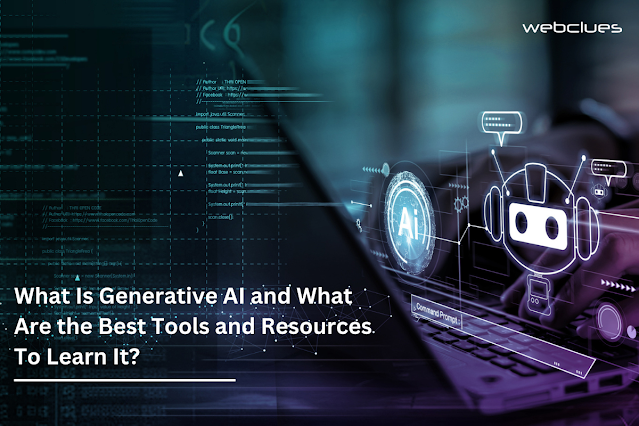At its core, generative AI relies on advanced algorithms and models designed to understand and replicate patterns inherent in data. One of the most notable techniques in this domain is Generative Adversarial Networks (GANs). GANs consist of two neural networks – a generator and a discriminator – engaged in a continuous loop of competition. The generator produces content, while the discriminator evaluates its authenticity. Through repeated iterations, the generator improves its ability to create increasingly convincing outputs.
Applications of Generative AI:
The applications of generative AI span a diverse range of fields, reflecting its versatility and potential. In the realm of art and design, generative artificial intelligence can autonomously create unique pieces, pushing the boundaries of human creativity. In the context of natural language processing, it can be utilized to generate human-like text, assisting in content creation, chatbots, and even storytelling. In the field of computer vision, generative AI can synthesize realistic images or enhance existing ones, contributing to tasks like image recognition and manipulation.
Tools for Learning Generative AI:
Embarking on the journey of learning generative AI requires familiarity with key tools and resources. Here are some of the best tools to get started:
TensorFlow:
TensorFlow, an open-source machine learning library developed by Google, is widely used for building generative AI models. TensorFlow provides high-level APIs like Keras, simplifying the process of creating and training neural networks. Its extensive documentation and supportive community make it an ideal choice for beginners and experienced practitioners alike.
PyTorch:
Developed by Facebook, PyTorch is another popular deep learning library that has gained significant traction in the generative AI community. Known for its dynamic computation graph, PyTorch offers a more intuitive and Pythonic interface, making it accessible for those new to deep learning.
Keras:
Although now integrated into TensorFlow as its official high-level API, Keras deserves a special mention. Keras provides a user-friendly interface for building and experimenting with neural networks. Its simplicity is advantageous for beginners while still offering the flexibility needed for advanced users.
GANs:
Given the central role of Generative Adversarial Networks in generative AI, understanding GANs is crucial. Numerous resources, including research papers, tutorials, and online courses, delve into the intricacies of GANs. The original GAN paper by Ian Goodfellow and his colleagues is an excellent starting point for understanding the foundational concepts.
Generative Models Online Courses:
Platforms like Coursera, Udacity, and edX offer specialized courses on generative models and AI. Notable courses include "Generative Adversarial Networks (GANs) Specialization" on Coursera, which provides a comprehensive understanding of GANs and their applications.
Books and Research Papers:
Delve into literature such as "Generative Deep Learning" by David Foster and seminal research papers in the field. Reading academic papers not only deepens your understanding but also keeps you abreast of the latest developments.
Challenges and Future Directions:
While generative AI has made remarkable strides, challenges persist. Ethical considerations, such as the potential misuse of AI-generated content, need careful attention. Moreover, achieving a balance between creativity and control remains a challenge as generative models become increasingly sophisticated.
Looking ahead, the future of generative artificial intelligence holds promise. As technology evolves, so do the possibilities for creative collaboration between humans and machines. Continued research, ethical guidelines, and education will shape the responsible development and deployment of generative AI, ensuring its positive impact on society.
In conclusion, generative AI represents a fascinating intersection of technology and creativity, opening new frontiers in the way we produce and interact with content. Aspiring practitioners can leverage the aforementioned tools and resources to embark on a learning journey that unravels the intricacies of generative AI, empowering them to contribute to the future of artificial intelligence. So, wait no more and unleash the power of generative AI with WebClues Infotech and pave the way for a future where innovation meets intelligence.


0 Comments